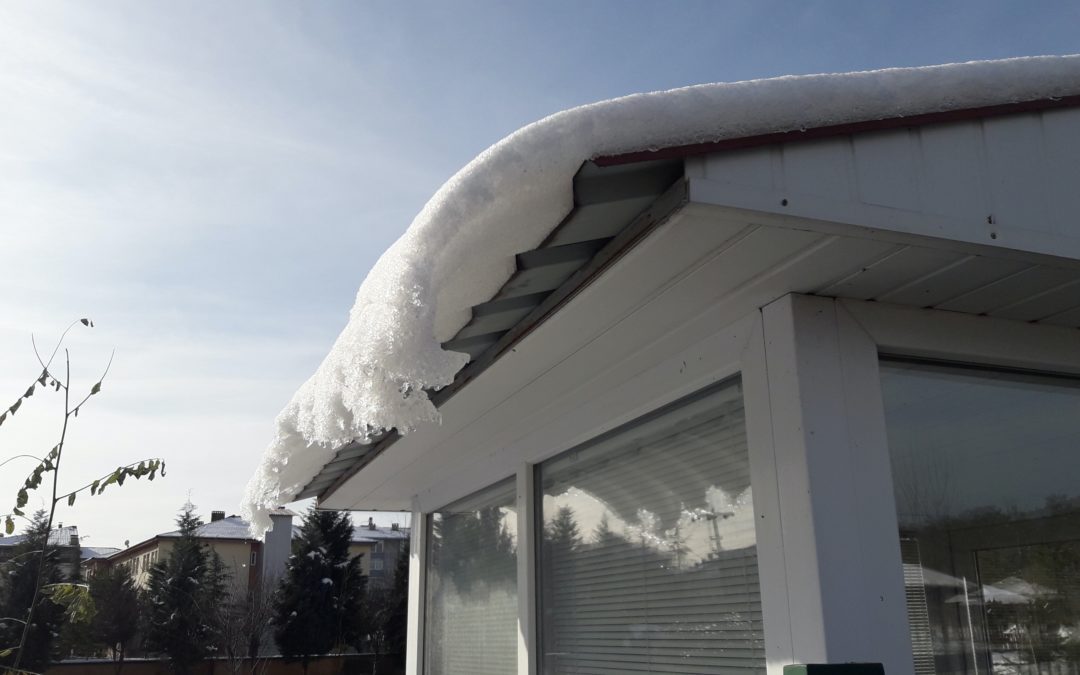As winter approaches, it’s important to be aware of the potential impacts of snow and ice on your roof. Heavy accumulations of snow and ice can put a strain on a roof that may not have been designed with cold climates in mind.
Additionally, large amounts of snow combined with below-freezing temperatures can cause ice dams to form along the eaves of your home, which can lead to water damage or even flooding inside the house.
What are the dangers of snow and ice accumulation on roofs?
Snow and ice accumulation on roofs can cause significant damage and even endanger the safety of those living in the home. The weight of snow and ice is considerable and can cause considerable structural damage to roofs, such as sagging and cracking due to excessive weight.
Snowmelt from the roof can lead to water damages inside the home causing further additional costly damages. Icy conditions on roofs might put homeowners at risk when they attempt to shovel or remove the snow themselves, which may result in slips or falls which could potentially cause serious injury or death.
How can you tell if your roof is in danger of being damaged by snow and ice buildup?
It is important to be proactive about assessing the risk of damage from winter weather by looking for signs of excessive weight build-up, such as sagging around the eaves or visible bumps along the surface of the roof.
If you can see any signs of ice dams or notice large icicles in gutters or from your roofline, these are sure signs that snow and ice accumulation has become an issue. Take note of any water stains inside your home or on the walls near the attic entrance. This would suggest that melted snow is penetrating through small cracks into your home, which could indicate larger underlying issues with your roof’s structure.
Taking care of these indications early could save you time and money later on if more serious repairs need to be done.
What are some tips for preventing damage to your roof from snow and ice accumulation?
• Have your roof inspected for damage or wear before winter arrives. Repair any damage, and replace worn shingles, or damage flashing to prevent leaks from melting snow and ice.
• Install ice and water shield underlayment on the roof before laying down shingles. Ice and water shield will repel most of the moisture so it can’t seep through the shingles and cause damage.
• Make sure your roof has proper ventilation to help regulate temperatures on the roof deck and attic space. This helps keep cold air out of your living area while also helping to reduce ice damming by keeping warm air away from the eaves of your house.
• Trim trees near your home to remove branches that hang over your roof. Low-hanging branches can limit sunlight on the roof which can slow down melting snow, resulting in an increased risk of ice dams forming at the edge of your roof.
• Keep an eye out for signs of icicles forming along gutters or valleys in the roof as these may be indications that an ice dam is starting to form – which could lead to major problems if left unchecked! Inspect these areas soon after any significant snowfall occurs so you can take appropriate action if needed.
What should you do if you already have damage to your roof caused by snow and ice accumulation?
If your roof has already sustained damage due to snow and ice accumulation, it needs to be addressed as soon as possible. Depending on the severity of the damage, you may have a few different options when it comes to repairing the roof.
If the damage is significant, it is recommended that a professional roofer inspect the surface. A qualified roofer can assess the situation and determine the best way to proceed in order to provide an effective repair.
Smaller issues such as missing shingles or minor leakage can be handled yourself using appropriate products, but unless you are confident in your ability and knowledge of doing so safely, it is always best to seek professional guidance in this type of situation.
Contact Us Today
It is important for homeowners to ensure that their roofs are properly maintained to prevent these hazards. Taking steps now to prepare for winter by ensuring that you have proper insulation, ventilation, and flashing can help protect your roof from harsh weather conditions — and ultimately save you money in costly repairs!

